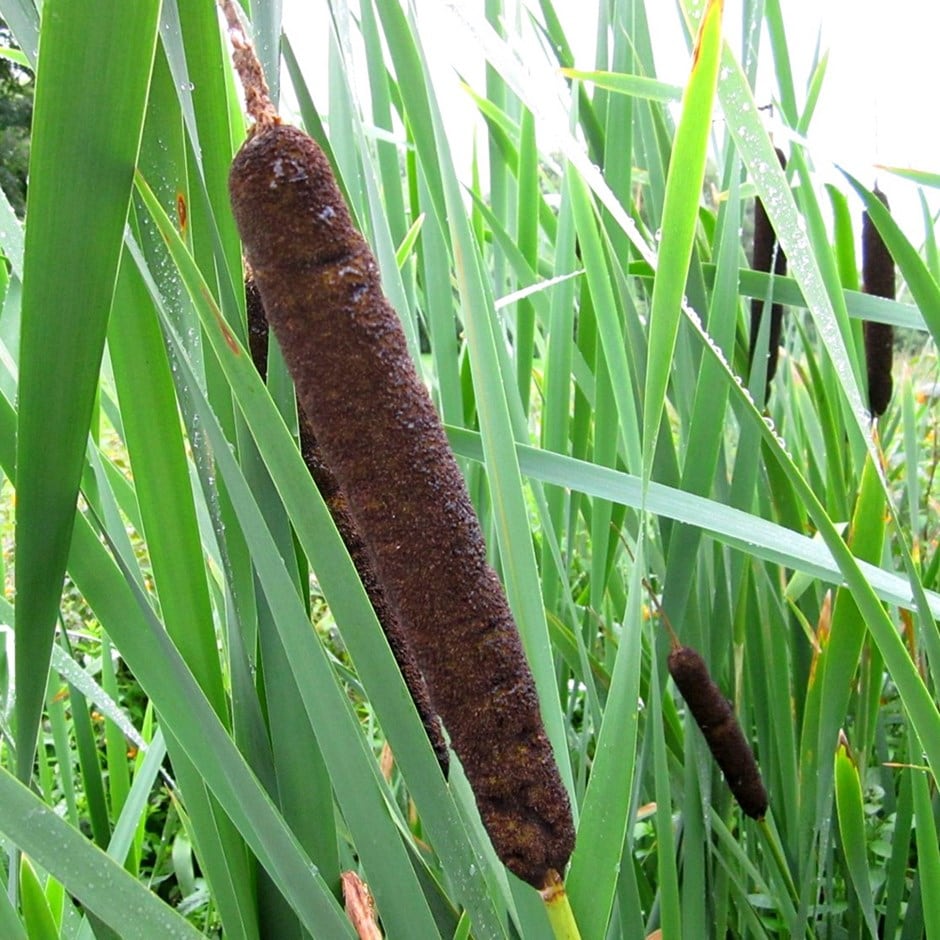Typha latifolia
cat tail
This pond plant dies right back in autumn, then fresh new growth appears again in spring.
- Position: full sun or partial shade
- Depth of water: 0-50cm (0-38")
- Rate of growth: fast
- Flowering period: July to August
- Hardiness: fully hardy
Thriving in wetlands and requiring minimal upkeep, Typha latifolia, also known as common bulrush, boasts impressive attributes for aquatic landscapes. With its long green leaves and distinctive dark brown velvety flower heads, this native perennial stands tall and robust, surpassing its counterparts in height and vigour. Renowned for its resilience, it tolerates brackish water and thrives even during flooded periods of the year, making it a versatile and and reliable addition to larger ponds and lakes. Its unique chocolate-coloured seed heads add visual interest and charm, while its ability to serve as cut flowers further enhances its appeal. Please note that this plant can be invasive if left unchecked.
Please note, we offer this plant in aquatic pots (for submergence in water) and 9cm pots with our peat-free compost more suitable for planting above the water line in boggy soils.
Please note, we offer this plant in aquatic pots (for submergence in water) and 9cm pots with our peat-free compost more suitable for planting above the water line in boggy soils.
These plants are available potted up (using a suitable aquatic compost) into aquatic pots. These pots are made of a fine mesh, which allows water to circulate through the compost, providing the plants with both oxygen and nutrients. If you are using them as a aquatic plant, they can be planted up to a water covering of 50cm (38") deep. For planting at or above the waterline, choose our 9cm pots for planting in boggy, reliably damp soils. Remove dead foliage and old flowered stems in spring. While its attractive seed heads may be left all winter if desired, it's best to clear them if they fall into the water to prevent any self-seeding where not desired. Additionally, cutting back foliage before spring growth starts helps maintain its appearance.

